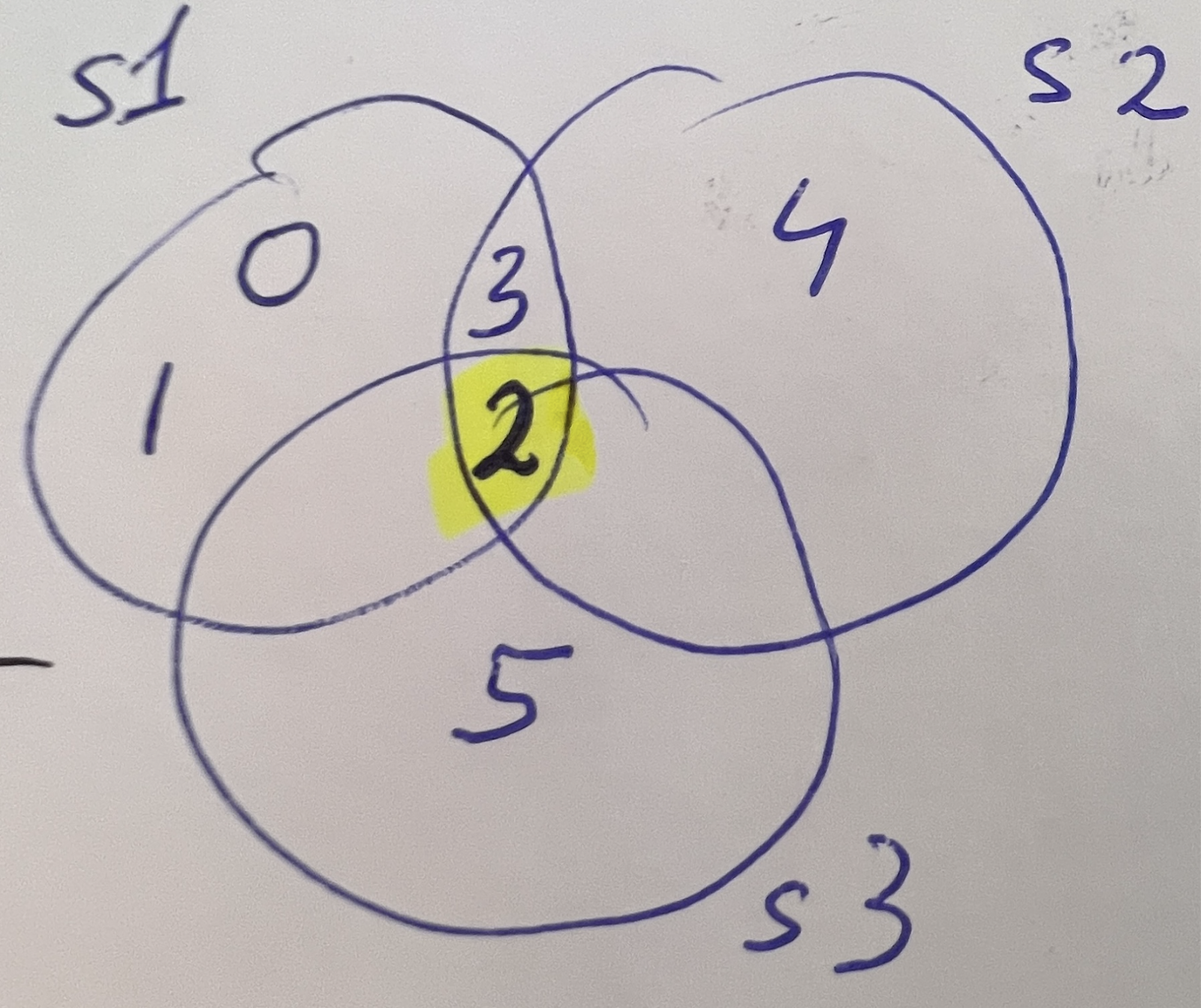https://docs.google.com/document/d/1jabPCNDI-OtCBxaEP1HnbpsJsjy4PWhvdDvN73mI0gA/edit?usp=sharing
context Python set: isdisjoint()
I am not expecting 2 to be in end result of this program
# test symmetric difference
s1 = {0, 1, 2, 3}
s2 = {2, 3, 4}
s3 = {2, 5}
print(s1 ^ s2 ^ s3) # result {0, 1, 2, 4, 5} - why is 2 in the end result? what am i missing?

context Python set: isdisjoint()
I am not expecting 2 to be in end result of this program
# test symmetric difference
s1 = {0, 1, 2, 3}
s2 = {2, 3, 4}
s3 = {2, 5}
print(s1 ^ s2 ^ s3) # result {0, 1, 2, 4, 5} - why is 2 in the end result? what am i missing?

